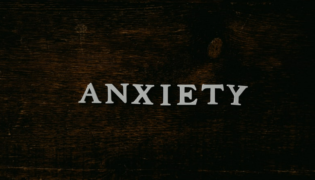
Allow me to introduce you to a person with high-functioning anxiety. Me.
So what does high-functioning anxiety look like?
Well, it can look like anything or nothing.
Last month, it was a full blown anxiety-attack. On a day where I had zero responsibilities or demands on my time. My blood pressure went WAY higher than normal. My breathing became shallow, and I just felt anxious. Like something bad was about to happen.
It didn’t, of course. But in that stretch of time (which felt endless), I had to work really, really, really hard with all the “brain tools” in my “toolkit”. First, I meditated (badly), floated on a raft in the pool, walked in nature, examined the evidence for the story I was telling myself. Next, I reached out to friends and family for reassurance.
Finally, I sat with it, knowing that the anxiety would pass. I just wanted to rush it along, but I should know by now that it doesn’t happen this way.
What does anxiety look like?
Ok, so that’s what the anxiety looked like to me, my husband, my family, and a few close friends. What did the outside world see?
Nothing.
Because it rarely, if ever, affects my work or social behaviors; I can compartmentalize the anxiety, name it, get my stuff done, and move on.
Until about the time I try to get to sleep. Then my mind tries to solve ALL the problems of the world. Right at the precise time my head hits the pillow, and the room is dark and cooled to a research-based temperature of 68 degrees Fahrenheit.
While everyone else is immediately asleep and snoring, I crawl out of bed and usually write in my daily journal or my personal journal. Then the thoughts don’t ricochet quite so much in my mind because I’ve rounded them up and corralled them in the pages of my journal.
They’ll be there tomorrow. And if I want to, I can start to figure out a plan for the issues I can impact, or reflect upon the items on the list that are far beyond my control.
How to get over anxiety
Anxiety doesn’t have to define us, even if it is with us all the time. We don’t get over anxiety or anxious behaviors and thoughts by ignoring them; that only fans the flame in our minds.
By recognizing and accepting, as well as inviting, some anxiety into our lives, we can begin to harness that energy for much more creative expressions of ourselves.
For more information and resources on anxiety, visit: https://adaa.org/
The Brain Coach Blog is written by executive function coach Mary Turos. Based in Belair, MD, Mary is affectionately known as 'The Brain Coach" for her work helping people achieve harmony using strategies based in neuroscience.